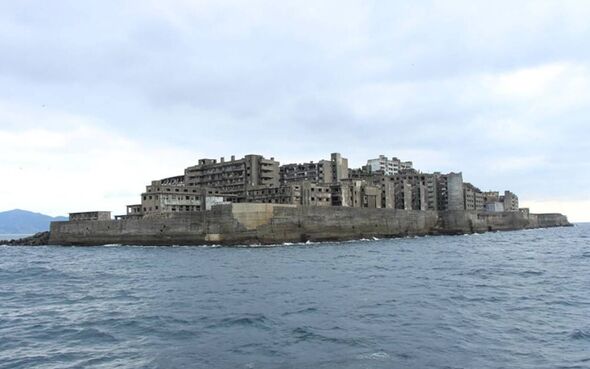Hashima Island is a chilling deserted island just nine miles off the coast of Nagasaki, Japan.
The island has been completely abandoned for over half a century and is now entirely reclaimed by nature. Despite its current population of zero, Hashima Island has a dark history marked by slavery and forced labour.
Known as Gunkanjima or “Battleship Island” due to its shape, the island was once a thriving coal mining hub in the 1800s after rich coal reserves were discovered. Mitsubishi purchased the island and its mines in 1890 during a period of rapid industrialisation, providing housing for workers and their families on the island.
Mitsubishi transformed the island, constructing apartment blocks, a school, communal baths, a pool, gardens, a clubhouse, and even a pachinko parlour – a popular Japanese pinball game enjoyed by the island’s inhabitants.
Residents of the island earned significantly higher salaries than their mainland counterparts, and many homes were equipped with cutting-edge technology. However, life on the island was far from idyllic, with harsh sea air combined with fumes from the mines leading to widespread respiratory illness.
Eventually, the coal reserves were exhausted and mining became unfeasible. As residents relocated, the island was deserted, leaving the once impressive concrete structures to decay as nature began to reclaim the land.
In 2015, UNESCO contemplated designating the island as a World Heritage Site in recognition of Japan’s industrial revolution. However, this proposal faced opposition from those who believed that Hashima’s darker past should be acknowledged.
During World War 2, Chinese prisoners of war, along with exploited Korean immigrants, were transported to Hashima and forced to work under brutal and inhumane conditions in the mines.
Escape was impossible, and thousands perished from starvation and exhaustion.
Japan had never previously acknowledged the island’s history of forced labour and slavery. It was only after Japanese officials agreed to do so that Hashima was included on the UNESCO list.
However, many viewed this as a significant setback in the reconciliation efforts between South Korea and Japan, given their fraught historical relationship. Many continue to campaign for the decision to be reversed.
Hashima, abandoned since 1874, has been reborn as a tourist hotspot for those fascinated by its dark history.
Since 2009, the island has welcomed tour groups, and its dystopian aura has caught the attention of filmmakers, including Sam Mendes, who used it as a location for his 2012 James Bond hit, Skyfall.
